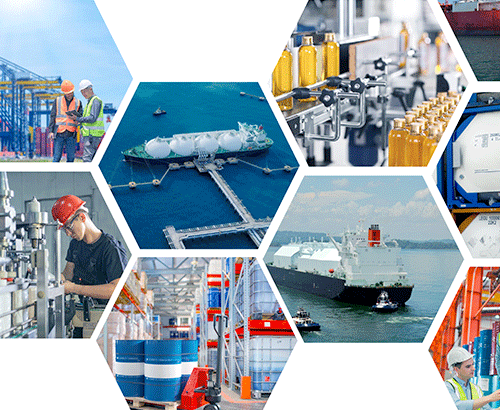2023 M&A Outlook for Construction Services

The fourth quarter of 2022 is showing prominent omens of decreasing mergers and acquisitions (M&A) activity in the construction services sector as we look to 2023.
While FMI expects this downturn to be mild, recessions tend to lower M&A activity. Higher interest rates, a softening housing market and decreasing stock prices continue to drag market activity. In any market, however, there are bulls and bears, and 2023 will be no different. This article will explore the areas we see as most ripe for consolidation in construction.
Heavy Civil and Infrastructure
With the passage of the Infrastructure Investment and Jobs Act (IIJA) spurring $560 billion over the next six to eight years, we expect to see a meaningful uptick in acquisitions of contractors that build and provide maintenance services to highways, bridges, roads and airports. Acquirers seeking to capitalize on this new demand will be looking for expert teams and regional expansion opportunities. In addition, spending to mitigate damage from natural disasters will attract buyers seeking to capitalize on these investments.
In addition to the IIJA, the Inflation Reduction Act (IRA) is in effect a climate change bill, directing $485 million in spending on green technology and materials. Given the capital-intensive nature of heavy civil work and stringent bonding requirements, expect most buyers to be strategic acquirers in this space versus private equity firms. Commenting on the $1.2 billion acquisition of Infrastructure and Energy Alternatives, Inc., MasTec CEO Jose Mas said, “With the transition to a new carbon-neutral economy fueled by green power, massive investments will be required in order to harness the nation’s best wind and solar resources. This will include installing thousands of miles of transmission lines necessary to bring green power from these remote regions to population and industrial centers, as well as upgrading last-mile electrical distribution networks for home, office and highway charging stations where very few exist today. Our recent announcement of the intent to acquire IEA is an important step in meeting that objective.”
Commercial and Industrial Electrical Contractors
FMI has also seen an increase in M&A activity for commercial and industrial electricals. While demographic factors have played an important role in driving sellers to the table, electrical contractors have unique exposure to what FMI is calling the new economy through established relationships across attractive, growing end markets. Some of these include data centers, which appear to see almost insatiable demand, electric vehicle charging stations, life science buildings, warehouses and other industrial buildings that feature growing sophistication. The continued push for further electrification in the U.S. will make contractors and services providers with skilled electrical labor forces attractive acquisition targets.
Publicly traded players such as EMCOR and MYR Group are continuing to seek out new geographic markets that offer the highest levels of exposure to these growth areas. Recent acquisitions, including EMCOR’s purchase of Quebe in August 2021, MYR’s purchase of Powerline Plus in January 2022, and Comfort Systems’ purchase of Atlantic Electric in April 2022, suggest a continued appetite for established players to broaden their revenue bases, reinforce market expertise and preempt secular shifts toward the new economy. Private equity firms have also been active in the space, compelled by the attractive growth opportunities, specialized nature of the services provided, and maturing sponsor-backed platforms that will likely come to market in coming years. Examples include Prospect Capital’s Valley Electric (2013), Westview Capital’s Prime Electric (2021), and One Rock Capital’s ArchKey Solutions (2021). As these portfolio companies come to market, it will be interesting to see if they become targets for larger strategic players or if they are further consolidated and diversified by larger financial players until they reach the size of a public offering. Regardless, market activity will be healthy, and midmarket contractors are well positioned as attractive targets.
Roofing Contractors
Due to its high fragmentation and the increasing frequency of storms, roofing M&A activity is seeing a tremendous uptick in consolidation. In the past, Tecta was the primary consolidator in the U.S., but other strong players have also entered the marketplace. Restoration Builders has executed on an effective M&A strategy in recent years with more than 10 acquisitions, including abcSage (2022), JC Roofing & Gutters (2020) and Sky Restoration (2020), while other large national players, such as CentiMark, Flynn and Baker, could easily follow suit.
In addition, roofing has witnessed a notable increase in private equity investment over the past few years. Faced with labor shortages and the mission-critical nature of construction and refurbishment, roofing provides a reliable stream of income that financial buyers can leverage.
The compelling investment thesis in roofing services is further supported by heavy commercial construction, which has created a large installed base of roofs that will drive demand for years to come. Recent sponsor activity from Soundcore Capital Partners (Roofing Corp of America – 2020), Aurora Capital Partners (Premier Roofing – 2020), Partners Group and Kohlberg & Co (BluSky Restoration – 2021), O2 Investment Partners (Capital Construction – 2021), North Branch Capital (Infinity Home Services – 2021), Gauge Capital Partners (Apple Roofing and Crest Exteriors – 2022), and Bow River Capital (Progressive Roofing – 2021) will drive both near-term demand for tuck-in targets as well as eventual large exits as these platforms reach maturity.
It will be interesting to see how these financial buyers exit from the investments upon harvest – will Tecta acquire them all? Will other buyers enter the market? Or will we see the IPO market come back to life?
Home and Commercial Services (HVAC, Plumbing, Facilities and other Maintenance Providers)
The home and commercial services space is positioned for continued activity, with large players seeking to consolidate their market positions and numerous sponsor-backed platforms beginning to reach maturity in the coming years. Private equity has had a strong presence in the space, with more than 20 platforms pursuing rollup strategies in attempts to capitalize on the recurring revenue base, operating synergies, specialized service offerings and multiple arbitrage opportunities.
Given the volume of private equity activity investment, with platforms such as Leonard Green & Partners’ Wrench Group (2019), Ares’ CoolSys (2019), Odyssey Investment Partners’ Service Champions (2021), and OMERS’ two platforms, Turnpoint Services (2020) and Pueblo Mechanical (2022), it is possible that some firms will pursue alternative paths from a traditional exit, such as an initial public offering or turn to a longer-term growth strategy focused on continued growth and diversification.
Industry sentiment remains strong. Commenting on the recent acquisition of Pueblo Mechanical, OMERS Director Jeff Kahn said, “It is an exciting moment in the commercial services industry, and Pueblo is well positioned to capitalize on the secular trends toward energy efficiency, sustainability, decarbonization and digitization that are driving demand.”
The long-term value proposition for home and commercial services will continue to motivate strategic and financial sponsors alike, and we expect that acquisition activity will be further driven by inflationary cost pressures and labor shortages, as competing market players pursue inorganic growth strategies to build operating scale and leverage.
Industrial Contractors and Alternative Energy Providers
Industrial contractors also continue to represent attractive targets for many buyers due to the specialized and critical nature of their service offerings, significant barriers to entry, recurring cash flows and minimal bonding requirements. Those contractors with significant oil and gas exposure will seek diversification to position themselves for the continued shift to renewable energy.
Blattner President Scott Blattner commented on the firm’s recent sale to Quanta for $2.7 billion: “Our industry is on the cusp of significant evolution, and this is an opportunity to add the additional scale and resources needed for our organization to continue leading and delivering certainty to our renewable energy customers.”
Similarly, Pearce Renewables’ recent acquisition spree (since partnering with New Mountain Capital in 2020) has included purchases of renewable energy service providers, including Mortenson Energy Services (2021), Mountain Renewables (2021) and MFG Energy Services (2022). FMI expects these larger players will likely continue to seek attractive targets to build out further scale, driving M&A activity.
Vertical integration has also occurred further down the value chain as providers partner with consulting and engineering firms to develop a diversified suite of service offerings to proactively address the increasing complexities of the renewable energy arena.
Legence Holdings, a Blackstone company, has consolidated a full suite of renewable energy procurement, design and implementation services through recent acquisitions, including CMTA (2021), Provident Energy Consulting (2022) and McCracken and Woodman (2022).
Further driving activity in this space is the growing need to reinforce and service essential infrastructure along the coastal regions most directly exposed to the impacts of climate change. Heavy storm damage in recent years has incentivized sustainability and infrastructure firms such as Tetra Tech to build their service capabilities related to design, modeling and consulting, and they will likely continue to do so as the country expands environmental infrastructure.
Other Key Industry Trends
- Inflationary Pressures: Elevated inflation levels will continue to increase margin pressure for market participants into 2023, impacting decision making for owners and contractors alike. While larger strategic players may pause on acquisitions, private equity will likely continue to be active in deploying its large committed capital base and seek companies with strong fundamentals and long-term growth prospects.
- Labor Shortages: Tight labor markets across the country present challenges for firms to secure and retain a sizable and capable workforce. Particularly in the Midwest and Mountain regions, businesses will likely seek inorganic means to support operating capabilities amid continued strong demand for their services.
- New vs Old Economy: Secular shifts toward certain new economy markets will continue to drive persistent M&A. Concerns around positioning and future-proofing will drive activity in end markets such as data centers, transportation, power, communications, health care and manufacturing, while reducing the attractiveness of markets such as residential new construction, lodging, hospitality, office and amusement.
- Geography: Location continues to be a key driver of M&A, with certain regions in the Northwest, Southwest and Southeast seeing continued strong interest from buyers. Given the localized nature of engineering and construction services, acquisition continues to be the strongest means of market entry, and smaller firms can expect continued interest from larger acquirers seeking access to these markets.
- Demographics: An aging population of owners is driving many stakeholders to consider a transaction regardless of overall macroeconomic conditions. Many of these owners are uninterested in weathering another economic cycle and will seek to monetize their stake holdings regardless of the macroeconomy.
M&A Outlook for 2023
Signs of a coming recession indicate challenges for some portions of the economy, but certain segments will continue to see strong growth despite economic headwinds. Targets providing specialized, future-proof services will continue to attract the strongest interest from buyers, and private equity will seek to deploy a large base of committed capital despite challenging conditions. As with any cycle, the recession and eventual recovery will be uneven across the economic spectrum; but strategic positioning and forethought will nonetheless prepare many owners for stability and security.



